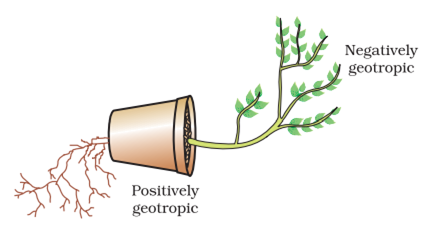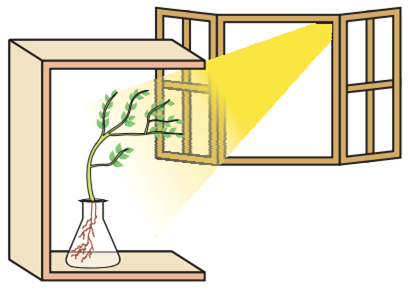CBSE
Class 10 Class 12
plants have neither a nervous system nor muscles. Plants use chemical means for control and coordination.
Movements in plants :
In the sensitive plant, since no growth is involved, the plant must actually move its leaves in response to touch.
The plants also use electrical-chemical means to convey this information from cell to cell, but unlike in animals, there is no specialised tissue in plants for the conduction of information.
Plant cells change shape by changing the amount of water in them, resulting in swelling or shrinking, and therefore in changing shapes.
Movements in plants can be divided into two main types:
Tropic movement
Nastic movement
Tropic movement: The movements which are in a particular direction in relation to the stimulus are called tropic movements.
There are four types of tropic movements, viz. geotropic, phototropic, hydrotropic and thigmotropic.
Geotropic Movement: The growth in a plant part in response to the gravity is called geotropic movement. Roots usually show positive geotropic movement, i.e. they grow in the direction of the gravity. Stems usually show negative geotropic movement.

Phototropic Movement: The growth in a plant part in response to light is called phototropic movement. Stem usually show positive phototropic movement, while roots usually show negative phototropic movement.

Hydrotropic movement: When roots grow in the soil they usually grow towards the nearest source of water. This show a positive hydrotropic movement.
Thigmotropic movement: The growth in a plant part in response to touch is called thigmotropic movement. Such movements are seen in tendrils of climbers.
Nastic movement:
The movement which does not depend on the direction of the stimulus acts is called nastic movement. For example, when someone touches the leaves of mimosa, the leaves droop.